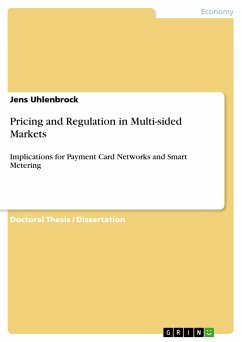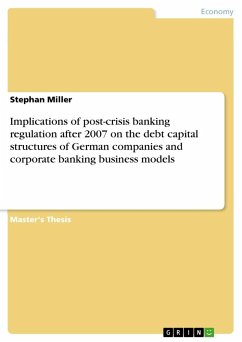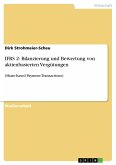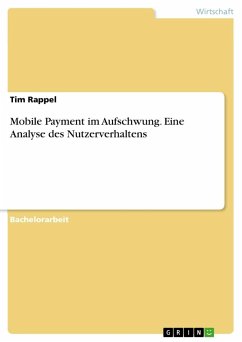Doctoral Thesis / Dissertation from the year 2011 in the subject Economics - Macro-economics, general, European Business School - International University Schloß Reichartshausen Oestrich-Winkel (Department of Governance and Economics), language: English, abstract: This thesis strives to offer new insights in two main areas. First, it investigates the fact that merchant usage fees for payment card services differ substantially among merchant sectors. Second, it identifies the smart (electricity) meter market as a multi-sided market and applies the insights found in the literature to better regulate a market-driven rollout of smart meters.Chapter 2 examines the determination of the merchant usage fee of a monopolistic unitary payment card network based on the characteristics of the downstream market. Merchants engage in Bertrand competition that allows for an observation of heterogeneous products. My coauthor and I find that the payment card network extracts a part of the economic rent that merchants obtain. The rent, and consequently the merchant usage fee, is increasing in the downstream market size, but decreasing in the price elasticity of consumer demand, as well as in the substitutability of products, and in the fraction of consumers who prefer card payments.Chapter 3 undertakes a similar analysis for Cournot competition among merchants. The merchant usage fee is decreasing in terms of the price elasticity of demand and has an inverse V relationship with regard to the fraction of card users. At first, increasing the fraction of cardholders makes accepting cards more attractive for merchants because of the increased sales. At some point, however, the higher costs of handling card transactions outweighs the benefit of increased revenue. Further, card companies can increase profits by influencing consumers to use their cards in sectors with a low price elasticity of demand where they can then tax a merchant's profits more heavily.Chapter 4 looks at smartmeters. A key economic obstacle to a market-driven smart meter rollout is the fragmentation of benefits among multiple stakeholders, which disperses investment incentives. My coauthor and I investigate how best to overcome this investment barrier by analyzing three distinct smart meter market structures. A key parameter for the analysis is the recognition that the smart meter market is multi-sided, making it essential to consider its peculiar characteristics. Our qualitative analysis indicates that a combined smart meter and grid operator, with a regulatory setup that permits the socialization of smart meter investment costs among all electricity consumers, is the best suited approach to implement a market-driven smart meter rollout.








